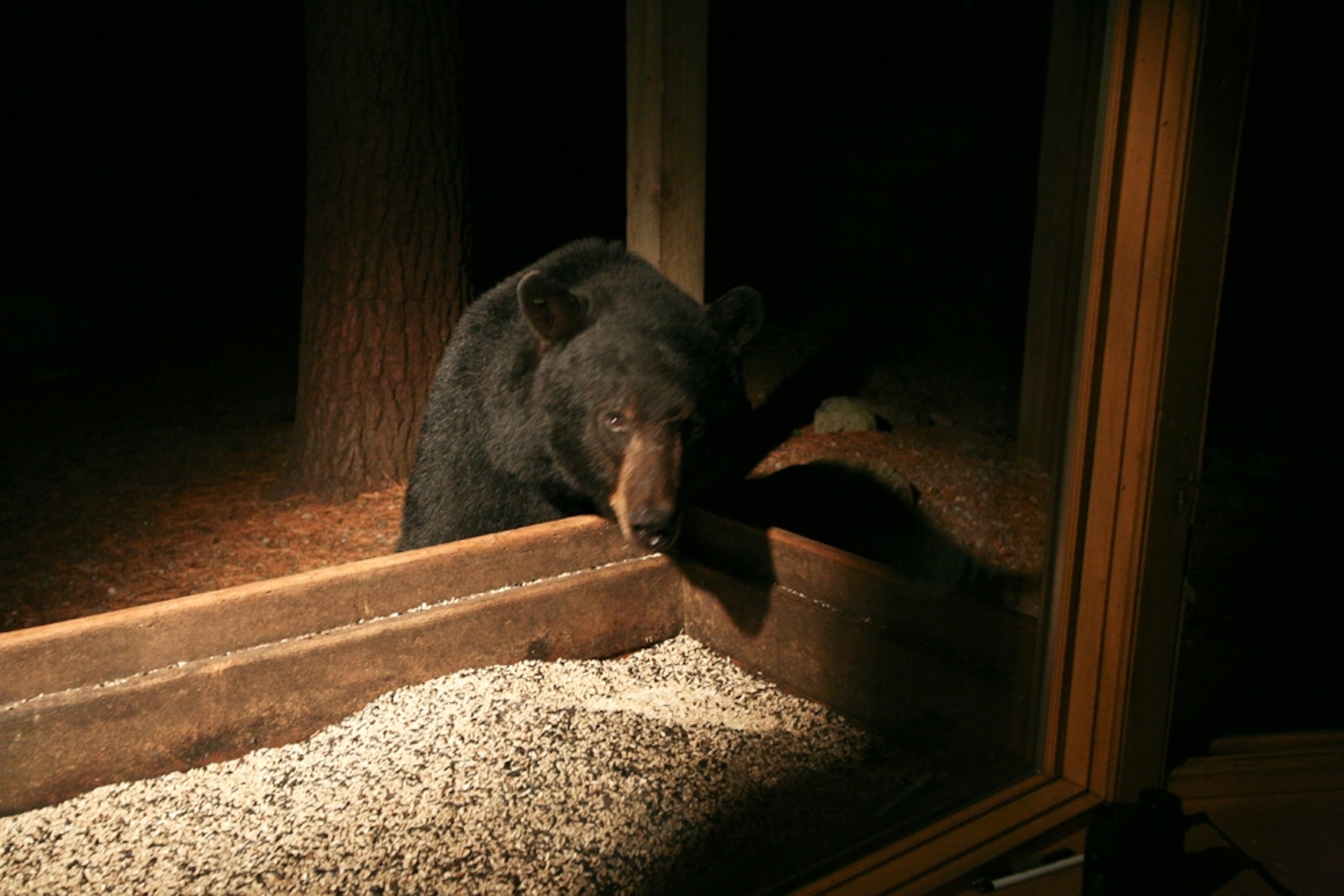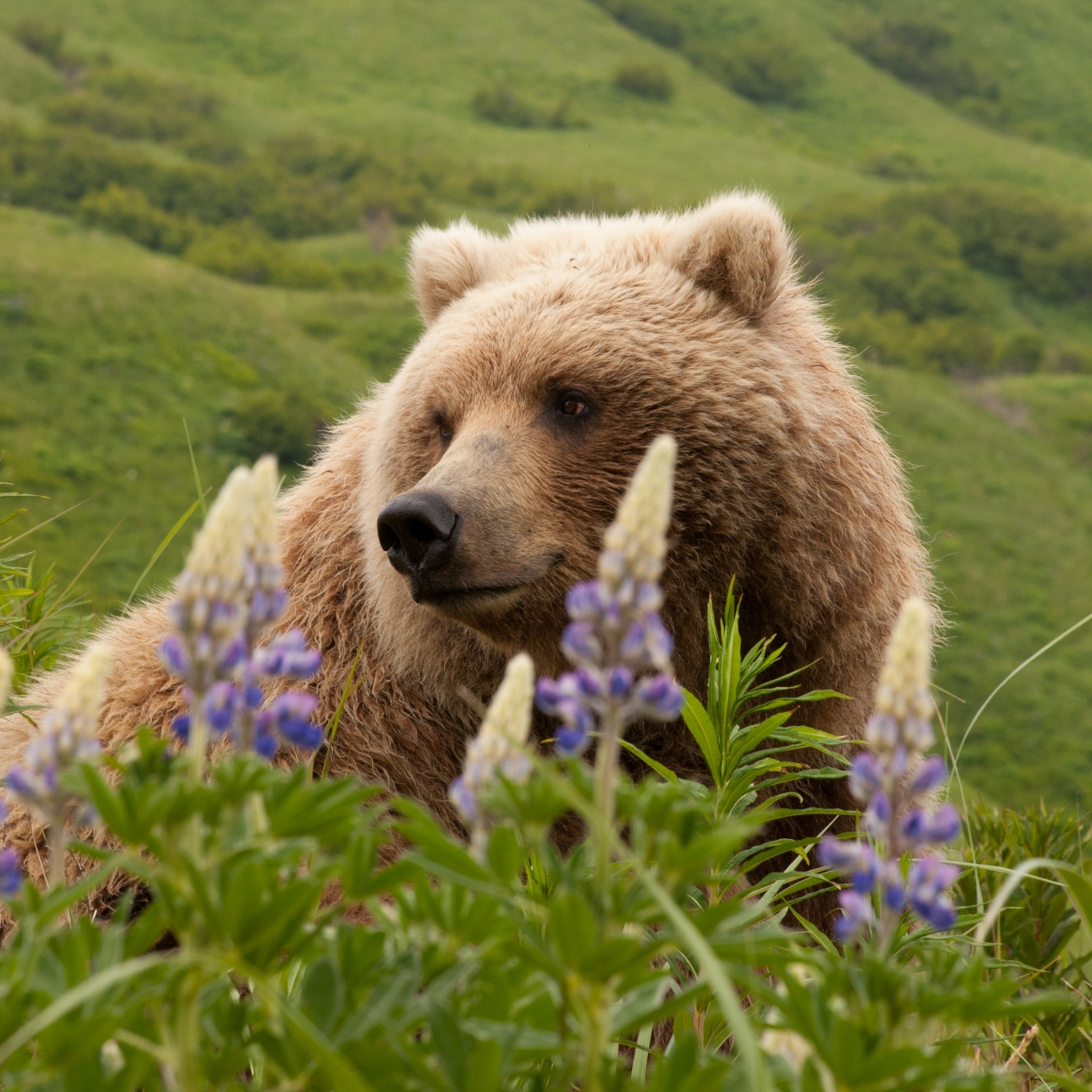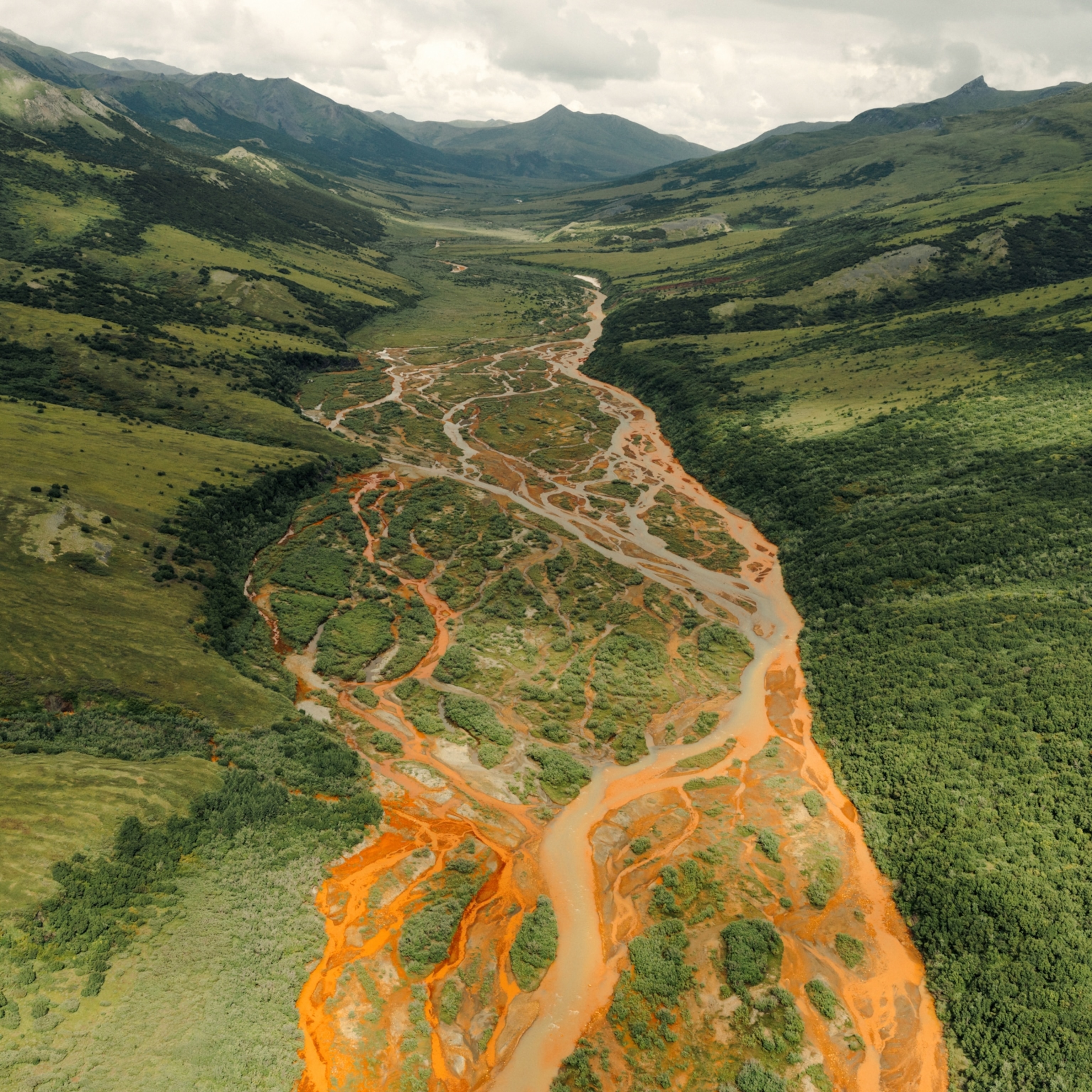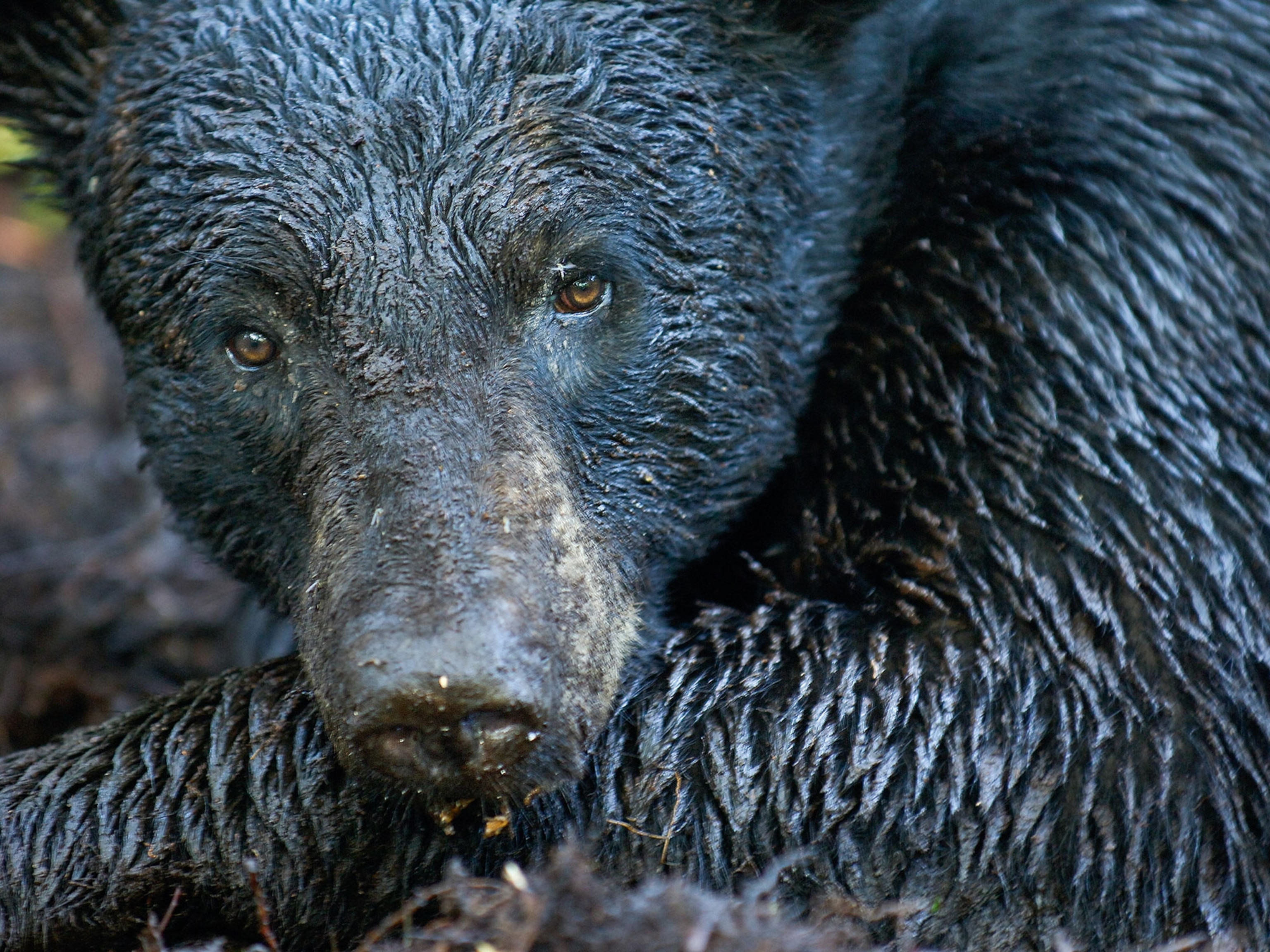
Please DO Feed the Bears, Biologist Says
Giving bears snacks may keep the animals away from homes and campsites, one biologist says. Others warn the practice is ineffective—possibly dangerous.
It flies in the face of conventional wisdom, but one solution to control nuisance black bears in the United States may be to offer them snacks, one biologist says.
Especially in the western United States, black bears will often break into cars, homes, and campsites in search of food. And as humans increasingly move into bears' habitats, more bear-human interactions have been occurring, experts say.
Many scientists say this close proximity of bears and people sets up a situation where bad things could happen, in part because the animals come to see people as food sources. But black bear biologist Lynn Rogers thinks otherwise. Instead, hunger is largely to blame for so-called nuisance behaviors, he said.
Placing food such as nuts, sunflower seeds, or even beef fat away from potential problem areas in situations where bears might be desperate—such as during droughts—can reduce break-ins and other potentially dangerous human-bear interactions, he said.
Rogers first presented his controversial viewpoint at the 10th Western Black Bear Workshop in Reno, Nevada, in May 2009.
Rogers, of the private, nonprofit Wildlife Research Institute in Ely, Minnesota, is known for getting up close and personal with—and even kissing—black bears. (See video: "Bear-Kissing Guide Seeks Out Intimate Encounters.")
But other experts point out that feeding bears puts people more in contact with the wild and unpredictable animals, which ultimately may not be in the interest of either humans or bears.
Bear-Feeding Experiments Show Benefits
Rogers draws his conclusions from long-running field experiments in Minnesota, including one state-government-administered project in which he and a team placed food—mainly unlimited amounts of beef fat—in the middle of an area with homes and campsites. The scientists made no effort to conceal themselves during the experiment, nor were other bear attractants, such as Dumpsters, removed.
During the three years prior to the tests, which started in 1984, six nuisance bears had been removed by local officials. However, during the eight years of experiments that followed—including the worst year for naturally occurring black bear food on record—only one bear was removed.
Anecdotally, other evidence by separate researchers seems to show that diverting bears with food can prevent them from becoming problems. The nonprofit BEAR League in Lake Tahoe, California—which promotes living in harmony with bears—found that supplemental feeding during a particularly bad drought was effective in reducing problem bears.
Prior to the feeding, bear house break-ins numbered in the hundreds—in some areas, bears broke into two to three houses a day, the BEAR League says. However, in areas where the league had supplied food, that number dropped to zero. In areas with no supplemental feeding, break-ins continued at a high rate, according to the league.
Other bear researchers contacted for this story pointed out that neither the BEAR League's research nor Rogers's conclusions have been published in journals that require reviews by other scientists.
Good Intentions Go Bad?
Dave Garshelis, bear project leader at the Minnesota Department of Natural Resources, pointed out that diversionary feeding might be helpful in keeping bears away from people, if it's organized by professionals and done on a limited basis in extreme situations of natural food shortage. However, he believes that such practices, done routinely, can permanently alter black bear behavior—for the worse.
"There's a big difference between 'diversionary feeding' to keep bears away, and 'recreational feeding' to draw bears in. There is no question that routine feeding leads to bears losing their wariness of people, and thus they’re more likely to approach closer to people. If that's something that one likes, then I guess that's a good thing for those people—but not for the bears, if you believe that four million years of evolved bear behavior is something to treasure and not tinker with,” Garshelis said.
Garshelis believes that such practices can permanently alter black bear behavior—for the worse.
"The bears are still wild, but over time their biology and their wariness toward people changes," said Garshelis, who worked on bear-feeding experiments in the 1980s.
For instance, a 2003 peer-reviewed study showed that "urban" bears consistently exposed to human garbage changed their behavior dramatically, becoming primarily nocturnal and spending less time in dens.
"Whether or not this is a bad thing is a matter of opinion. I happen to think it is."
Stewart Breck, a biologist with the USDA'S National Wildlife Research Center in Fort Collins, Colorado, agreed, saying feeding can be dangerous for both bears and people.
"Diversionary feeding of this kind necessarily means that humans and bears will come into contact more frequently. And that's when good intentions can go bad," Breck said.
"While a black bear attack is unlikely, bears are unpredictable," he said. "They're powerful animals capable of harming people."
USDA's Breck also said that human contact puts bears at risk too. When someone is killed by a bear, people will sometimes use "draconian management methods"—such as shooting the bear dead.
(Related: "U.S. Bear Gallbladders Sold on Black Market.")
Bear Feeding a Temporary Solution?
Bear biologist Rachel Mazur added that diversionary feeding is a temporary solution at best and doesn't address the real problem.
"We've done a really poor job, in many cases, of developing land without taking into account animal migration and feeding patterns," said Mazur, who works in Nevada's Humboldt-Toiyabe National Forest.
"And feeding them will, of course, reduce conflict in the short term. But what are we trying to protect? If we're trying to protect black bears as a species, I believe we should be protecting everything about them—their ecology, habitat, and natural movement."
Study leader Rogers agreed that "we need to deal with all the problems" but he says that, in situations where humans have already moved into bear habitat, diversionary feeding can help.
"Food," he believes, "can lead bears into trouble—or out of it."







